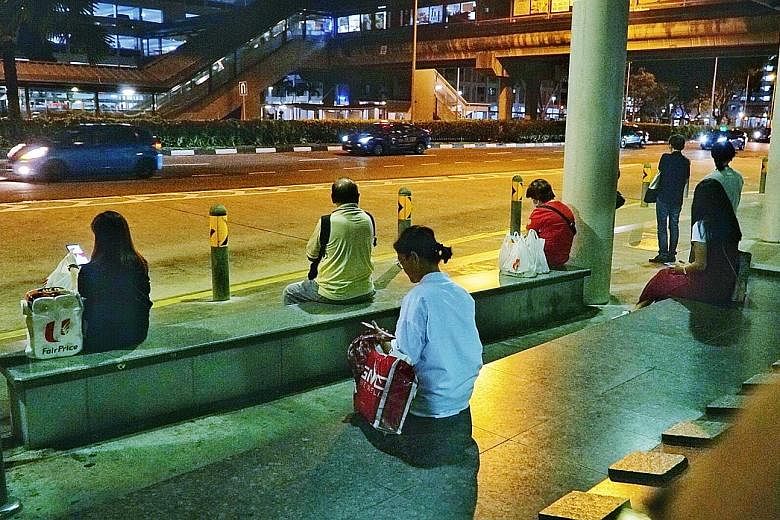In ordinary times, Singapore's Changi Airport - straddling Asia's crossroads and among the finest of such facilities anywhere - is a humming, throbbing hive of activity. It is to Asia what Dubai is to the Middle East and Africa, or London's Heathrow to Europe. Last week, a history buff walking into any of its terminals could be excused for musing this must have been how newly deserted towns in the Sierra Nevada seemed at the end of the California Gold Rush.
The barely active terminals are a result of the Singapore Government's decision to disallow all short-term visitors into the country as it battles Covid-19, now seeing a second surge after the island republic asked its sons and daughters overseas to come home to escape the coronavirus ravaging Europe and America. Bars and other entertainment outlets have been ordered to close; equally significant for a determinedly multicultural, multi-religious nation, mosques and churches, too.
Singapore thrives on openness; trade, for instance, is three times its gross domestic product (GDP). That it should have taken these steps even as its annual tourist numbers are more than three times its 5.7 million resident population underscores how seriously it is taking the threat.
Even during the severe acute respiratory syndrome (Sars) outbreak in 2003, it had not thought of closing its borders. This time, it was among the first countries to place restrictions on visitors from Wuhan, China, the source of the virus outbreak. Restrictions on visitors have progressively escalated since.
Asia is not unfamiliar with contagion. In recent times, talk of an "Asian flu" first emerged in 1997 during the Asian financial crisis that ravaged the economies of East and South-east Asia. Then, as now, its origins were in China, which sharply devalued its currency in 1994, leading to severe loss of competitiveness elsewhere and, ultimately, collapse after speculators attacked East Asian assets, many of which had run up huge US dollar-denominated debts that became unpayable as currencies collapsed. The Sars epidemic in 2002-2003 and the global financial crisis in 2007-2008 caused economic contractions.
But Asia, whose economies had already begun slowing, has never quite faced a situation like this. In China, Asia's biggest and the world's No. 2 economy, GDP was forecast to expand at 6 per cent or less this year before the outbreak. Japan, the No. 2 in Asia, had reported an annualised GDP contraction of 7.1 per cent in the October-December quarter, thanks to a consumption tax hike and global slowdown.
India's economy, the third largest, was tottering anyway under an unprecedented shrinkage in consumption and a near-crisis in its financial system. Now, with a public health system that has less than one hospital bed per 1,000 people - a third of the global average - a terrified government is trying an unprecedented lockdown to stem the virus' spread as the nation awaits the hot season that could, it hopes, drive cases down.
In previous crises, Asia had the reassuring backing of China to fall back on. During the Asian financial crisis, for instance, having devalued severely in 1994, Beijing held the line in further depreciation of its currency and thus gave gasping East and South-east Asian economies more room to recover. It was a policy stance that won it immense gratitude around the region at the time.
Likewise, during the global financial crisis, it stepped up with a US$586 billion stimulus package that helped prop up growth at home and abroad.
However, that package also perhaps laid the seeds of runaway debt, and Beijing has less room for expansion now with debt estimated at more than 300 per cent of its GDP. Today, new bond defaults are reportedly topping US$1 billion (S$1.43 billion) a week and business data on company closures has not been forthcoming lately.
Elsewhere, there is little to look forward to at the moment. The Summer Olympics that Japan was to have hosted from July, and for which it spent a reported US$12 billion, has been put off to next year, robbing Asia, and the world, of an uplifting moment amid its darkest hour. On Thursday, the Cabinet Office downgraded its assessment of Japan's economy, saying it was in a "severe situation".
Never before have things looked so bleak for the region. Singapore's Deputy Prime Minister, Mr Heng Swee Keat, called the situation "an unprecedented crisis of a highly complex nature" as he announced emergency economic measures last week, including dipping into government reserves for only the second time in the country's history.
China has done a remarkable job in checking the disease and is poised to have its industrial and education sectors fully back on their feet. But, given the external environment, it is not clear what supply chain disruptions it will have to endure, or where its exports can go in a situation where external demand has cratered. There are lingering doubts about whether it has fully contained the domestic outbreak as well, given that reports suggest it does not count asymptomatic carriers of the virus - who could still be transmitting the disease.
In South-east Asia, the nation most at risk is Indonesia. A daily briefing pushed into my mailbox on Wednesday by The Jakarta Post asked the dire question: Will Indonesia be South-east Asia's Italy? Its report noted that Indonesia now had the highest death toll in South-east Asia, just weeks after declaring itself "virus-free".
In South Asia, the nation most at risk is perhaps Pakistan, given that public health authorities have, unlike giant neighbour India to its south, been unable to eradicate even polio. Densely populated India has gone into an unprecedented lockdown.
Every crisis must pass, and so must this. But until a proven vaccine is developed - and there is no sign of it yet - it is not easy to see the bottom.
The Bedouin young in West Asia were raised on the wisdom that while trusting in God, one must not forget to tie the camel. In today's Asian context, that would translate into scrubbing your hands down several times a day, keeping a safe distance from other people and, where possible, wearing a mask.


